 |
 |
 |
 |
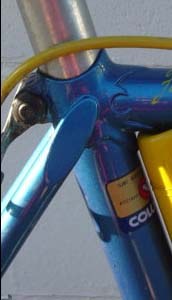 |
 |
 |
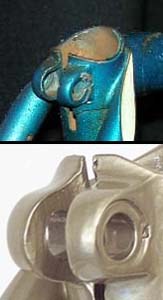 |
 |
 |
 |
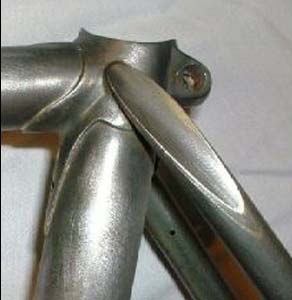 |
 |
 |
 |
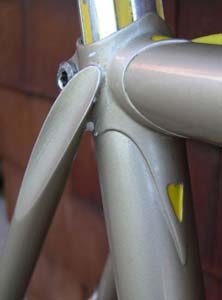 |
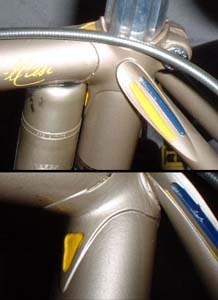 |
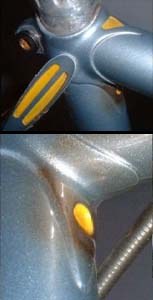 |
 |
 |
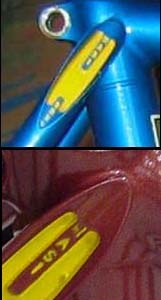 |
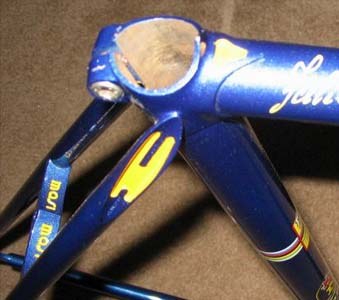 |
 |
 |
 |
 |
| c. 1952 | Speciale Corsa: Italy, 1954 | c. 1958 | Special: Italy, 1960-61 | Special: Italy, 1960-61 | Special: Italy, c. 1962 | Special: Italy, c. 1963 | One of Faliero's personal touches was to take the empty seat lug ears (non-Masi example, above), plug the holes with a tube, and fill the ears with braze. Must have been time-consuming, but it was very strong and looked great. | Special: Italy, 1968 | Gran Criterium: Italy, 1970 | Gran Criterium: Italy, 1971 | Gran Criterium: USA, 1973 | Gran Criterium: Italy, 1973 | Gran Criterium: USA, 1974 | Gran Criterium: USA, 1976 | Gran Criterium: Italy, c. 1974 | Faliero Masi: Italy, 1975 | Prestige: Italy, 1975 | Prestige: Italy, 1975 (top) 1978 (bottom) | Prestige: Italy, 1982 | Top: 3V: Italy, 1985 Bottom: Prestige: Italy, 1985 |
Gran Criterium: USA, 1985-1987 | Gran Criterium: USA, 1987 | Gran Criterium: USA, 1988 | Team 3V USA, 1992 | Nuovo Prestige: Italy, 2004 |
| Lug manufacturer unknown. Unusual seat stay treatment (for Masi). | This was to become the standard Masi "look" for many years... flat beveled stays, cast Cinelli long-point lugs. Here, the stay attachment was quite low... | ... but it would migrate upward over the coming years. Hard to see, but Faliero had added his now trademark long seat tube tang which is missing on the previous example. | Some "Nervex Masis" had this pointed semi-wrap-around stay... | ...while others had the Masi standard beveled stay. | Faliero then returned to the Cinelli lugs and his traditional look... | ... though the bevel and contour of the stay as well as its attachment point varied somewhat. So did the length of the seat tube tang (which at times was quite long, as in this spectacular example). | In 1967, Faliero switched to Nervex Dubois lugs which had shorter tangs. This was also the introduction of the cutout, a unique shape that was a cross between a heart and a triangle. This was to be a signature Masi 'look' for decades. | The look remained unchanged on the first Gran Criteriums... | ... until the introduction of the famous 'fluted' stay in the spring of 1971. Like the flat stays, these were done by hand. After sawing the stay at an angle and relieving the open end with a curved file... | ... a curved piece of frame tubing (or fork blade) was brazed into the depression and filed flush with the stay, as can be seen in this unpainted example. There was quite a bit of variation in these stays (the angle of the bevel, the crispness of the flute edges, and the contour of the upper end). | Sometime around the end of 1971, two holes began to appear in the seat tube tang. | In 1973, Masi production began in Carlsbad, CA. The look of the first frames was pretty much identical to the Milano bikes, but they soon began to diverge. Here is a Gran Criterium from 1974... | ... and here is a later example from 1976 with investment cast lugs. It should be noted that even though the cast lugs were supposed to eliminate a lot of finish work, in many cases builders still altered them significantly for design purposes. In this example, notice the unusual point in the seat tube shoreline (right below the seat stay). Note that by 1976, the two holes had disappeared form the seat tube tang on US frames. | While in Italy, the two holes gave way to a smaller version of the heart cutout. | Here is a 'short tang' example. Note also the engraved stay ends. Unlike the earlier stay ends, these were cast plugs that were brazed into the end of the tube (see the 2004 Nuovo Prestige for an unpainted example where the joint is visible). | Here is an early Prestige with the same slotted ends and a single hole in the seat tube tang. Both were very short-lived features | These cast seat stay plugs would remain in use for several decades... | ... though the "Brev Masi" text would change to "Masi Brev" ... | ... and there would be slight changes in the way the top ends were contoured, as in these two examples... | Meanwhile, back in the US, Masi continued to use the handmade fluted stays until 1985 when they began to use the Italian plugs. Note also the Italian brake bridge with the Italian curved sanserif typeface... | ...which made its way onto the seat stay plugs in 1987. Oddly, there is still no indication these were used on an Italian bike, where they would have been more appropriate. | In 1988, the US Masi got a plug with the slabserif typeface that they had been using on decals since 1973 (Italy switched to the rounded typeface in 1975). | Here is a different version with an open style typeface. | A return to a more traditional look. Richie-issimo lugs with two holes in the tang invoke the spirit of the early 70's, while the cast seat stay plugs continue a look that has been an Alberto trademark for 30 years. |